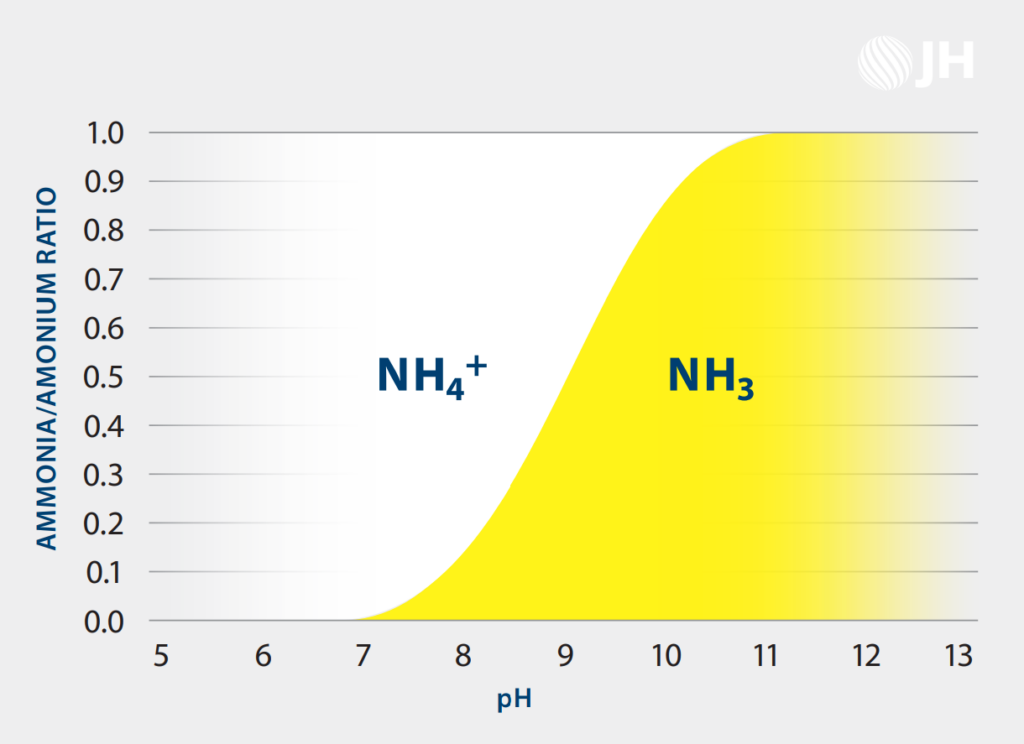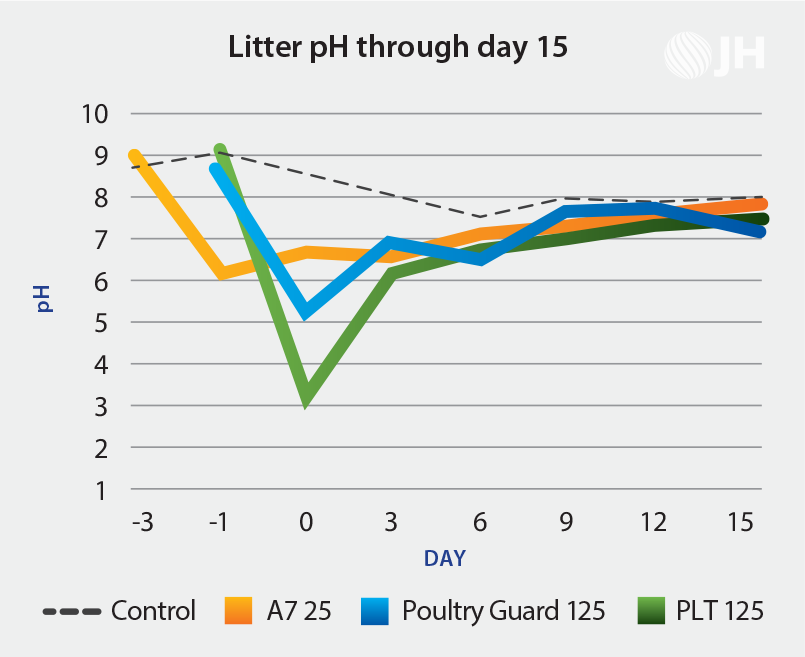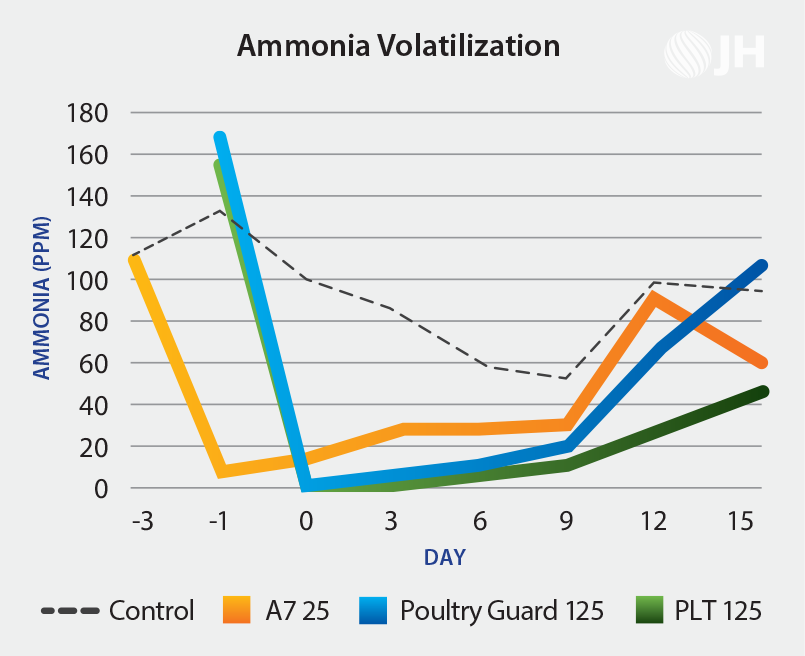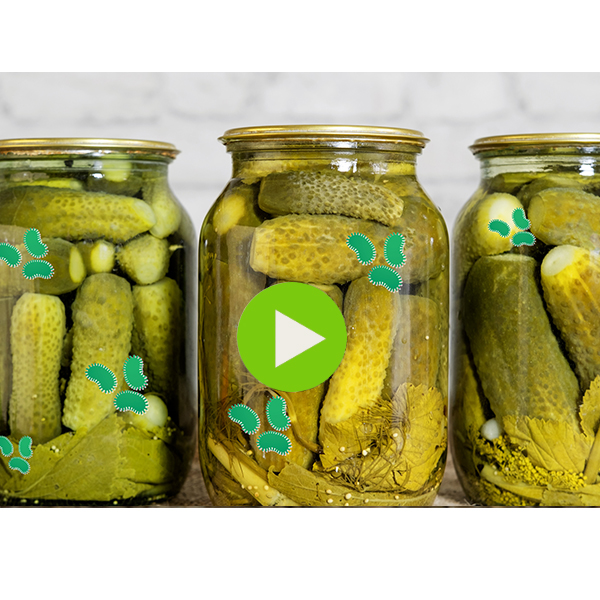pH and Poultry Litter: Understanding it’s importance
pH is a measure of how acidic or basic a solution or substance is. The pH scale goes from 0 to 14 with 7 being neutral. A pH that is less than 7 is acidic while a pH greater than 7 is basic.
Why is pH important?
It’s important when you consider the pH levels that allow for bacterial growth. Bacteria can grow rapidly at a pH close to neutral. A low pH (very acidic conditions) will greatly inhibit the ability of bacteria to grow.

pH and Ammonia

Ammonia begins to volatilize from the litter starting at pH 6.8. Most people round off to pH 7 in conversation, but low levels of ammonia can be present at a slightly acidic pH. That means, lowering litter pH with a litter amendment keeps that harmful ammonia from escaping the litter.
How Long Can Amendments Lower pH?
The role of amendments is to drop the pH of the litter and keep ammonia bound. How long an amendment can keep the pH low and the ammonia bound will depend on the litter conditions, and the strength and application rate of the amendment.
The active ingredient in all mainstream litter amendments is sulfuric acid. A look at most product safety data sheets show the percentage of sulfuric will vary depending on the product, and that all liquid products have a range. A 2021 product acid strength study showed the level of acidity that top products offered:
- PLT = 38.78%
- Dry product 1 = 34.73%
- Liquid product 1 = 24.11%
- Liquid product 2 = 24.84%
The effect of this variation can be seen in their ability to lower pH and ammonia initially and over time. PLT offers the highest acidity content, and therefore lowers the pH better and for a longer period than the competitor products.


Want more pH education? Contact your Jones-Hamilton Ag rep to schedule.

